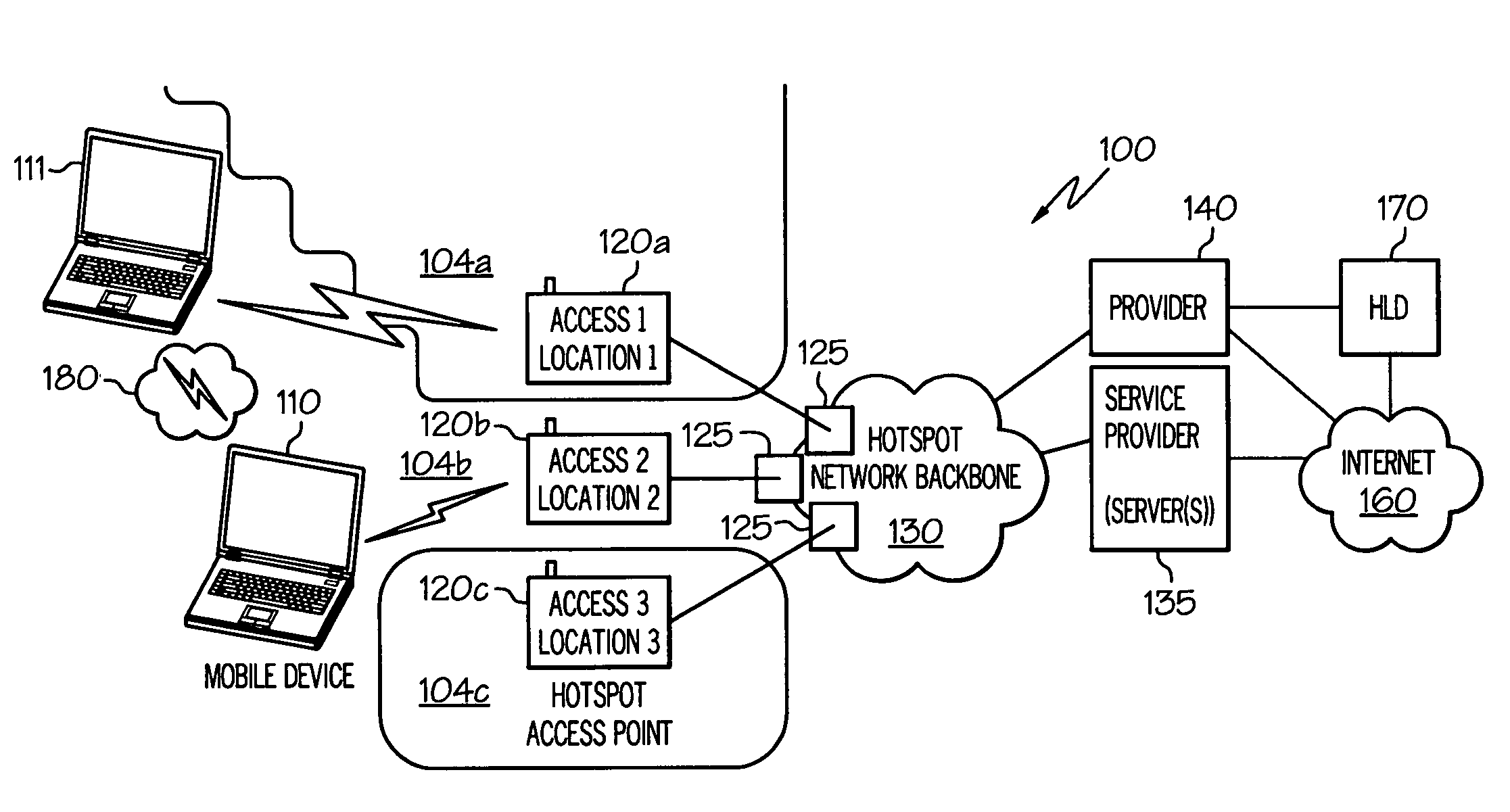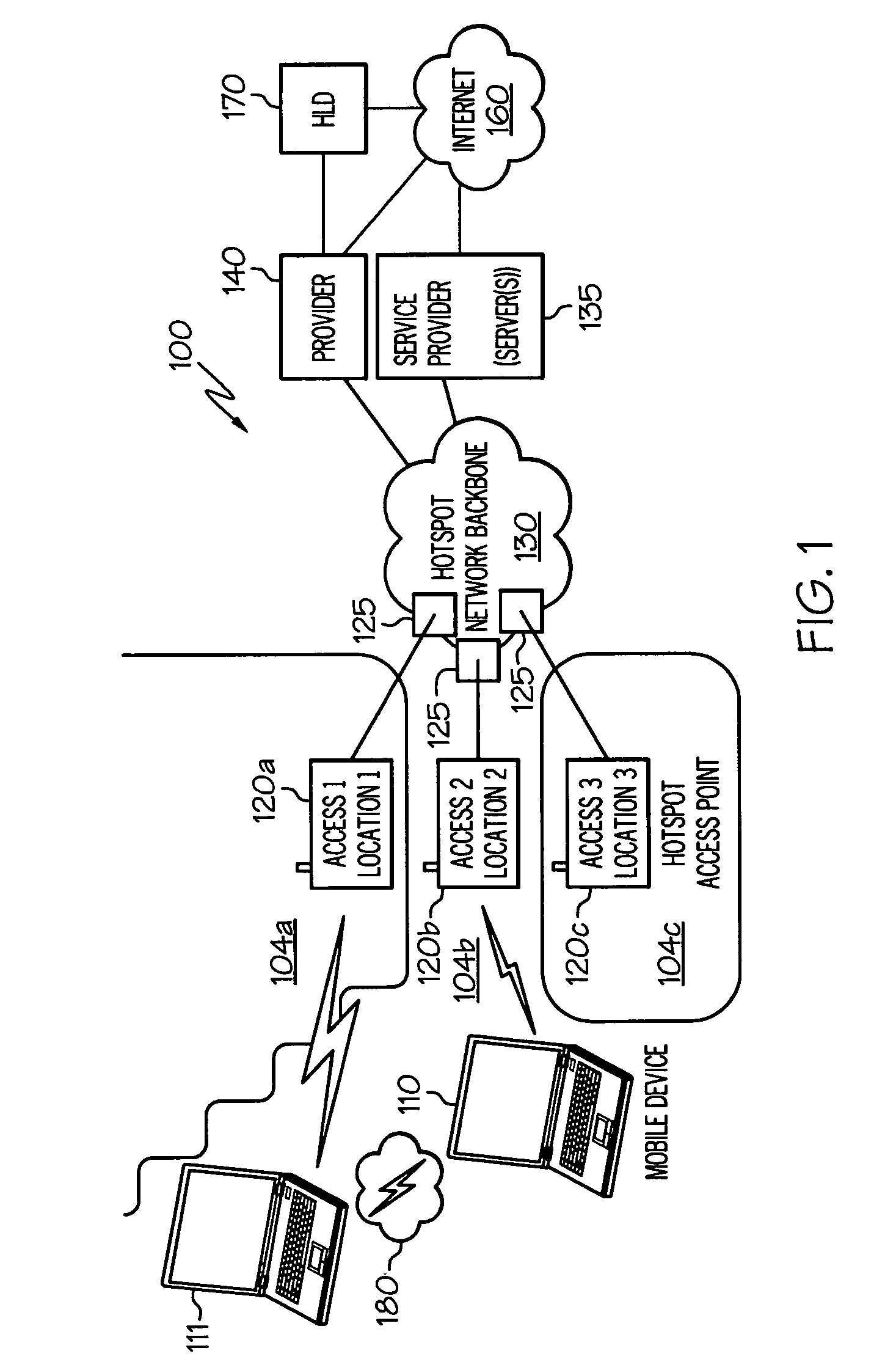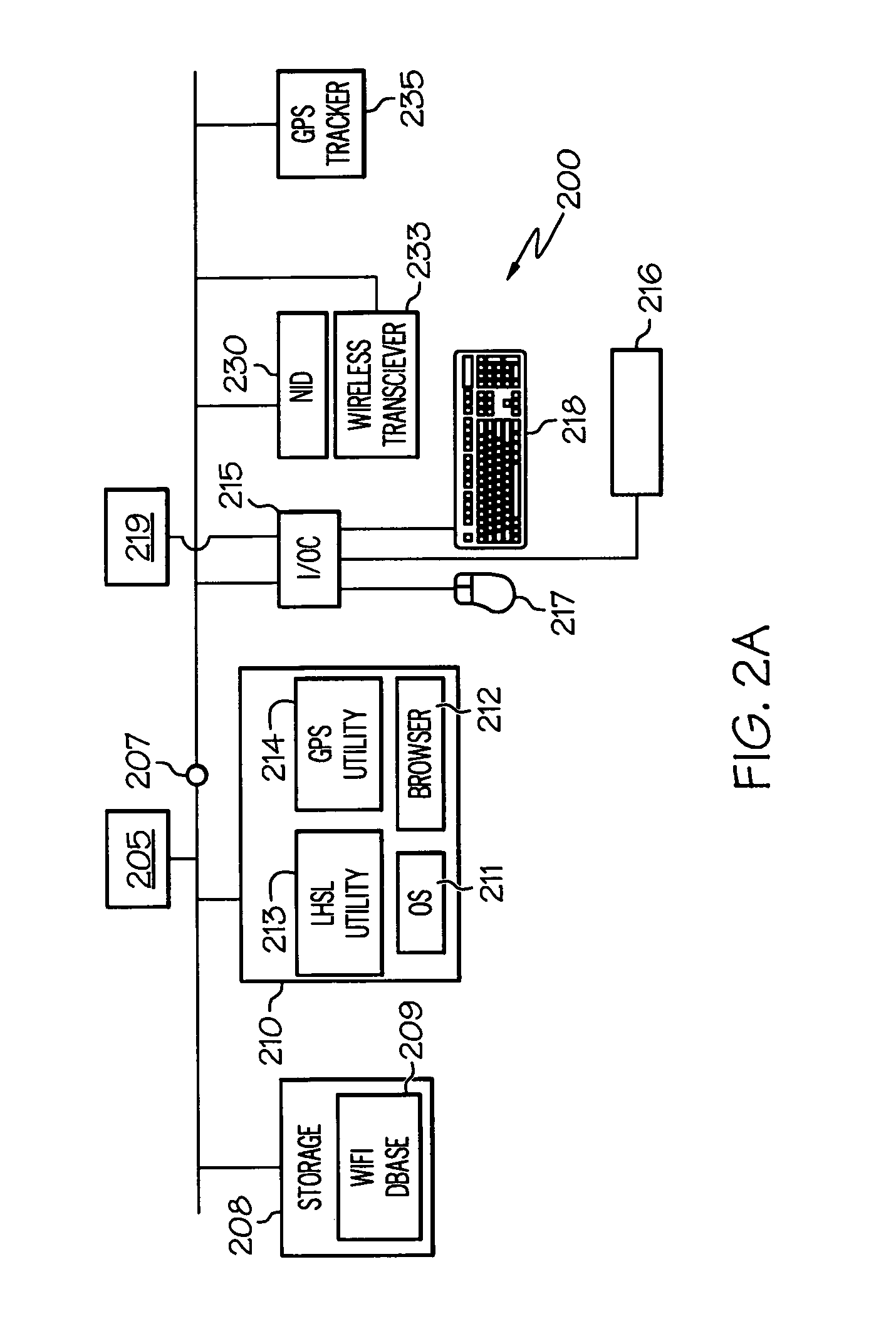On-device mapping of WIFI hotspots via direct connection of WIFI-enabled and GPS-enabled mobile devices
a mobile device and wifi hotspot technology, applied in the field of computer networks, can solve the problems of weak outdoor wifi network, weaker and more reliable wifi, and difficulty for users to locate wifi hotspots in nearby geographic locations, and achieve the effect of efficiently generating a substantially accurate lis
- Summary
- Abstract
- Description
- Claims
- Application Information
AI Technical Summary
Benefits of technology
Problems solved by technology
Method used
Image
Examples
Embodiment Construction
[0031]The present invention provides a method, system / device, and computer program product for efficiently generating a substantially accurate list of available hotspots in geographic locations. Two different implementations of the invention are provided, described below in delineated Sections I and II. The first implementation, which is described in Section I below, involves updates to a server-level (centralized) Provider that maintains up-to-date WIFI hotspot information with the aid of a plurality of mappers. The second implementation, which is described in Section II below, involves individual user-devices programmed with a WIFI locator utility that initiates frequent updates of a locally-stored WIFI locator database with up-to-date WIFI hotspot information.
[0032]Within the descriptions of the figures, similar elements are provided similar names and reference numerals throughout the figure(s). Where a later-described figure utilizes an element in a different context or with dif...
PUM
 Login to View More
Login to View More Abstract
Description
Claims
Application Information
 Login to View More
Login to View More - R&D
- Intellectual Property
- Life Sciences
- Materials
- Tech Scout
- Unparalleled Data Quality
- Higher Quality Content
- 60% Fewer Hallucinations
Browse by: Latest US Patents, China's latest patents, Technical Efficacy Thesaurus, Application Domain, Technology Topic, Popular Technical Reports.
© 2025 PatSnap. All rights reserved.Legal|Privacy policy|Modern Slavery Act Transparency Statement|Sitemap|About US| Contact US: help@patsnap.com



